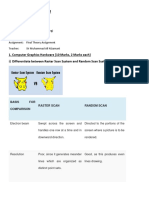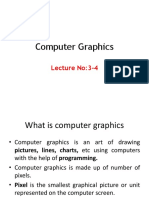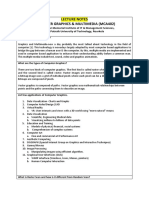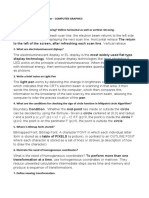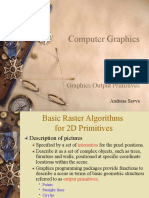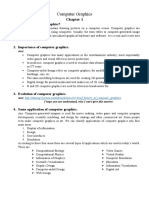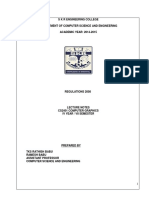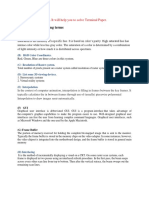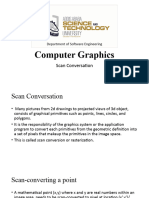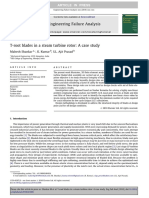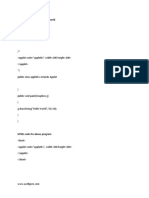0% found this document useful (0 votes)
9 views9 pagesProject Work of Multimedia
The document discusses computer graphics, defining it as a field that manipulates visual content and detailing its applications in art, education, entertainment, and more. It also differentiates between raster scan and random scan displays, explains algorithms for drawing circles and lines, and covers 3D transformations like perspective projection, reflection, and rotation. Additionally, it addresses hidden surface removal techniques, emphasizing their importance in rendering realistic images.
Uploaded by
seasonaryan80Copyright
© © All Rights Reserved
We take content rights seriously. If you suspect this is your content, claim it here.
Available Formats
Download as DOCX, PDF, TXT or read online on Scribd
0% found this document useful (0 votes)
9 views9 pagesProject Work of Multimedia
The document discusses computer graphics, defining it as a field that manipulates visual content and detailing its applications in art, education, entertainment, and more. It also differentiates between raster scan and random scan displays, explains algorithms for drawing circles and lines, and covers 3D transformations like perspective projection, reflection, and rotation. Additionally, it addresses hidden surface removal techniques, emphasizing their importance in rendering realistic images.
Uploaded by
seasonaryan80Copyright
© © All Rights Reserved
We take content rights seriously. If you suspect this is your content, claim it here.
Available Formats
Download as DOCX, PDF, TXT or read online on Scribd
/ 9


